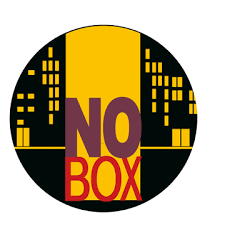Here’s the problem: we believe that once we’ve delivered a message — written it, recorded it, spoken it aloud, hit “SEND” or (truth be told) even outlined it in bullet-form — that we have Communicated. Put another way (and maybe a bit more to the point), when we think about communicating, we inevitably think about message delivery.
Conventional wisdom views “Great Communicators” as those gifted in the art of articulation. When it comes to marketing communication, we seek a wordsmith, an award-winning designer, and those able to grab an audience by the eye and ear, create and produce at the highest level…and deliver the message.
Enter the “Social Media.”
View social media marketing tools through conventional eyes — that is, see them primarily as message delivery vehicles — and you sacrifice the opportunity to organically add a new dimension to your marketing efforts. Am I the only one who, upon first hearing about Twitter, scoffed — wondering what value could be contained in 140 character limit for each message? How profound or poetic might one be when brevity is enforced? (My appreciation for Emily Dickinson notwithstanding.)
Clueless. Because I was thinking only in terms of delivering my message.
And while I may be slow, I did eventually come to realize that the real power of social media is that listening is at its core.
In fact, unlock the art of proactive listening in the social media, and you’ll discover a way to connect with your audience that will change your marketing — both in terms of strategy, and execution.
To that end, here are three ideas on how to use social media to proactively listen.
1. Master two or three questions. That’s all it takes. Pose the right query to followers, fans and even foes, and you tap into the best marketing research available — insight into what matters most to your clients/customers and targets, directly from them. And never underestimate the potential of a 140 character survey.
2. Build a Feedback mechanism. What this ends up looking like will depend on the tool, but you can bet your unhappy customers will utilize every tool at their disposal (remember the United Breaks Guitars video?). Be proactive and facilitate (encourage) conversations about your product or service — the good and not so good — and you’ll hear about problems and opportunities in real time. This “conversation-context” is significantly more productive than a complaint box or traditional reactive approach to customer service. (By the way — defensiveness has no place in a proactive feedback mechanism. Avoid it at all costs.)
3. Spend more time taking content in than you do dispensing your message. There is, no doubt, a more poetic way to articulate that idea; but we’ll forgo poetry in favor of connecting. You get the idea. Listen (much) more than you speak. Read more than you write. I’ve seen varying suggestions as to effective ratios, and don’t profess to have a proven formula. I think in terms of no more than 1 in 5 communication efforts revolving around a marketing message. I know a few folks who hit more like 1 in 10 when it comes to Twitter.
Three ideas. I’d appreciate hearing yours.
Imagine a marketing strategy built around on-going proactive listening. No telling how the marketplace might change!
